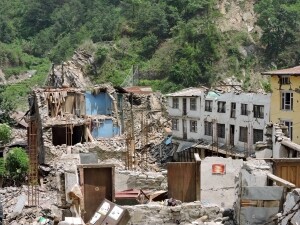News & Trending Topics
STS News, Fall 2015 – When a devastating 7.8 magnitude earthquake struck the South Asian nation of Nepal last April, Emily A. Farkas, MD was among the cardiothoracic surgeons who sprang into action.
Dr. Farkas and a team of 35 surgeons, nurses, and other health care workers planned to leave for Nepal that same week as part of an STS/Thoracic Surgery Foundation for Research and Education/Edwards Lifesciences Foundation Every Heartbeat Matters project. Their mission, through the non-governmental organization CardioStart International, was to help establish a not-for-profit cardiac surgical program at Kathmandu University Hospital at Dhulikhel.
Because of the massive earthquake and the overwhelming need for medical care and humanitarian aid, the mission was changed so that Dr. Farkas and her team could provide the medical assistance so urgently needed.
Twenty-one of the original team members arrived in Nepal on May 3, including Dr. Farkas and CardioStart founder Aubyn Marath, FRCSEd, MBBS, MS, a cardiothoracic surgeon and STS member.
Dr. Farkas has participated in charitable surgical missions in several countries, including Peru, Mongolia, Vietnam, Nigeria, and Haiti, but this was her first time assisting with disaster relief.
“Due to the media coverage, you expect the devastation, but it’s still so striking when you’re amidst it,” she said. “What was really surprising was seeing how the Nepali people handled it. They have so much strength and courage, and they managed the adversity with grace and poise.”
Team members started by helping physicians and nurses at Dhulikhel Hospital, which serves the entire Kathmandu Valley and much of eastern Nepal. They saw many orthopedic injuries, complex lacerations, burn injuries, and inhalation injuries.
“Almost half of the hospital staff had lost their own homes. It was really remarkable that they were still there prioritizing the care of these patients. That kind of selflessness is inspiring,” said Dr. Farkas.

A Second Earthquake Strikes
On the team’s 10th day in Nepal, the country was hit by a second major earthquake, which collapsed already weakened structures and triggered landslides in the mountain and valley areas.
“We had just started to bring patients inside again after evacuating from the first earthquake, but then we had to move the entire hospital, except ventilated patients and the OR, outdoors again under makeshift tents and tarpaulins,” explained Dr. Farkas. “We also slept outside in our own tents and bivouacs. It was like a war zone without enemies.”
CardioStart had already sent two 40-foot shipping containers of supplies for the original cardiac surgery mission. The team utilized many disposable products, like bandages and tape, for the disaster relief.
“During the second earthquake, people overreacted because they were so traumatized from the first one. Some people jumped out of windows, resulting in spinal column fractures from the impact,” she said.
Assistance Spreads Beyond Dhulikhel
In addition to their work at Kathmandu University Hospital, CardioStart team members also assisted in two villages outside of Dhulikhel.
They provided medical supplies, clinical support, and food and water filtration support. They also met with leaders in one of the villages who were worried that the school for 300 children and 21 teachers had been destroyed and couldn’t be rebuilt in time for the upcoming monsoon season.
Because Kathmandu is home to several tent-making companies that specialize in mountaineering expeditions, team members were able to find a company that could make 13 heavy-duty, classroom-sized tents in a week.
“To be able to put that together and get the tents up with the people in the village was so heartwarming,” Dr. Farkas said. “The children were so proud and happy to have their school back.”
She said she also was moved by the outpouring of support from her cardiothoracic surgery colleagues, including STS members, who either donated to the effort or secured help from their institutions.
John B. Holt, MD, from Florida Hospital Memorial Medical Center in Daytona Beach, was one such member. He became
acquainted with Dr. Farkas when she was working on an interim basis at a local hospital.
“After seeing the e-mail from STS, I went to my hospital administration and asked them if they would help, and I was surprised by how quickly they wrote a check,” he said. “I was really impressed by what she was doing. She’s structured her whole career around these missions.”
Dr. Farkas will travel back to Nepal in November and move forward with the original plan to establish a cardiac surgery program.
“We were a little hesitant to even discuss that with Nepali physicians, but they were actually very eager to move forward; they didn’t want to let the earthquakes hold them back,” she said.
